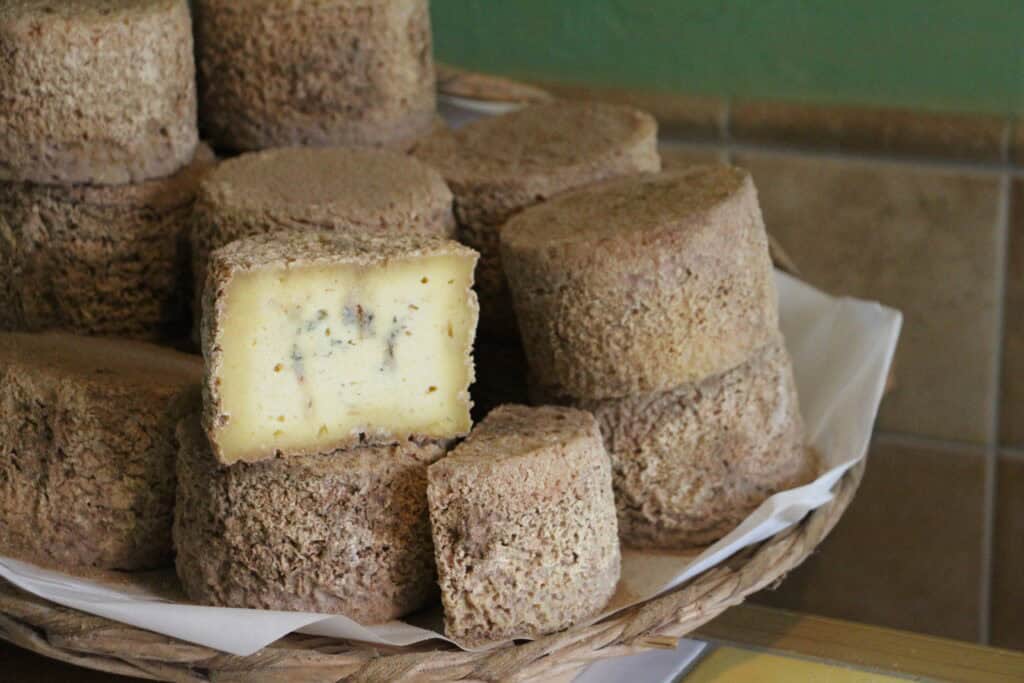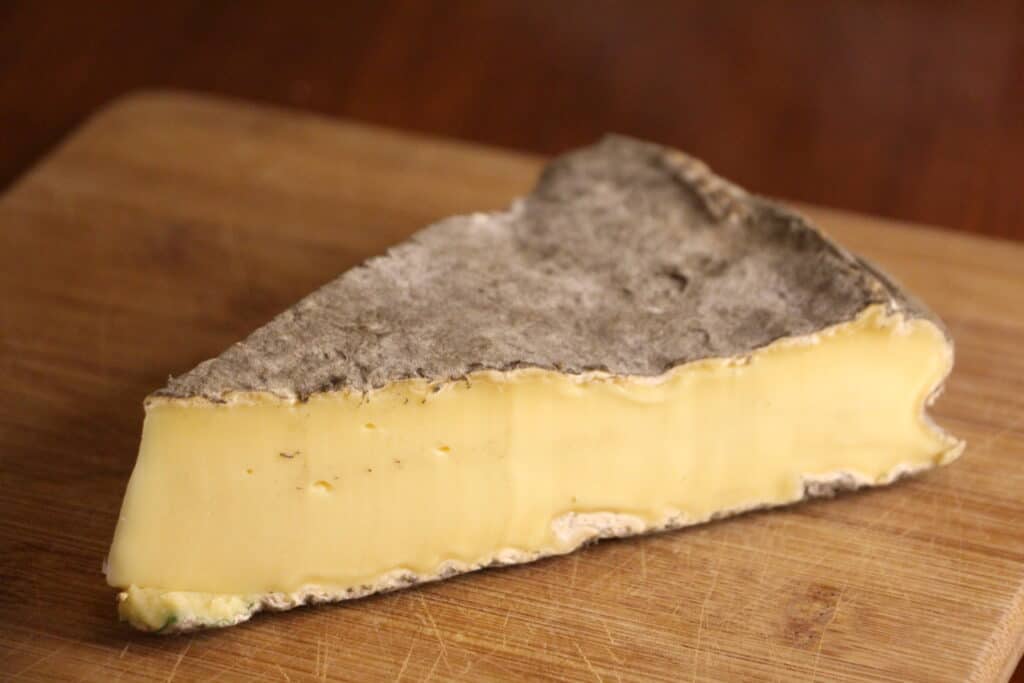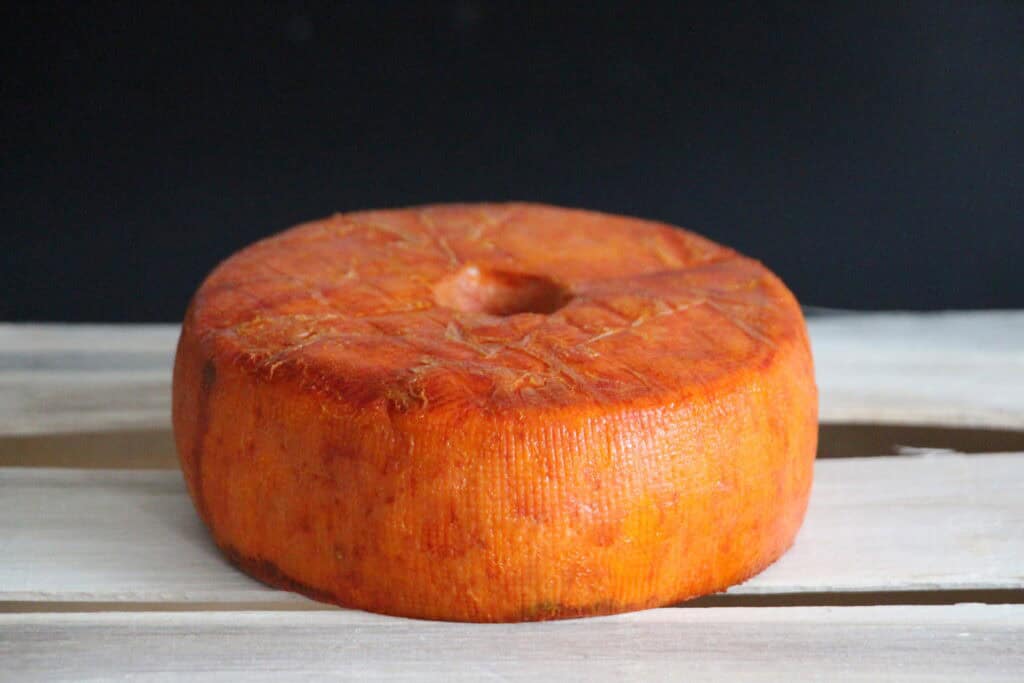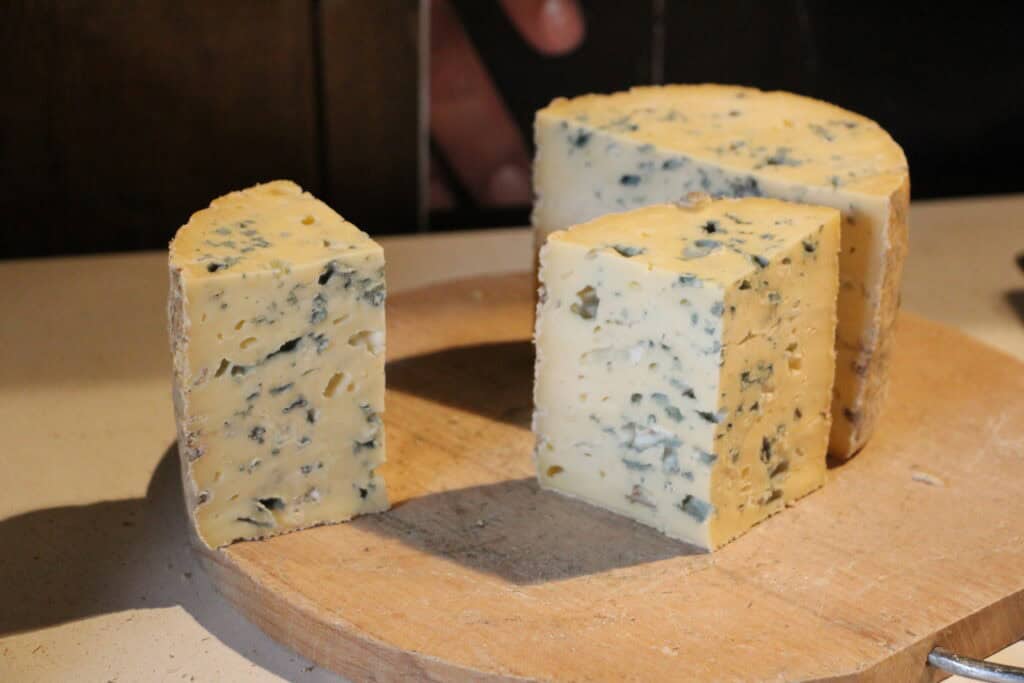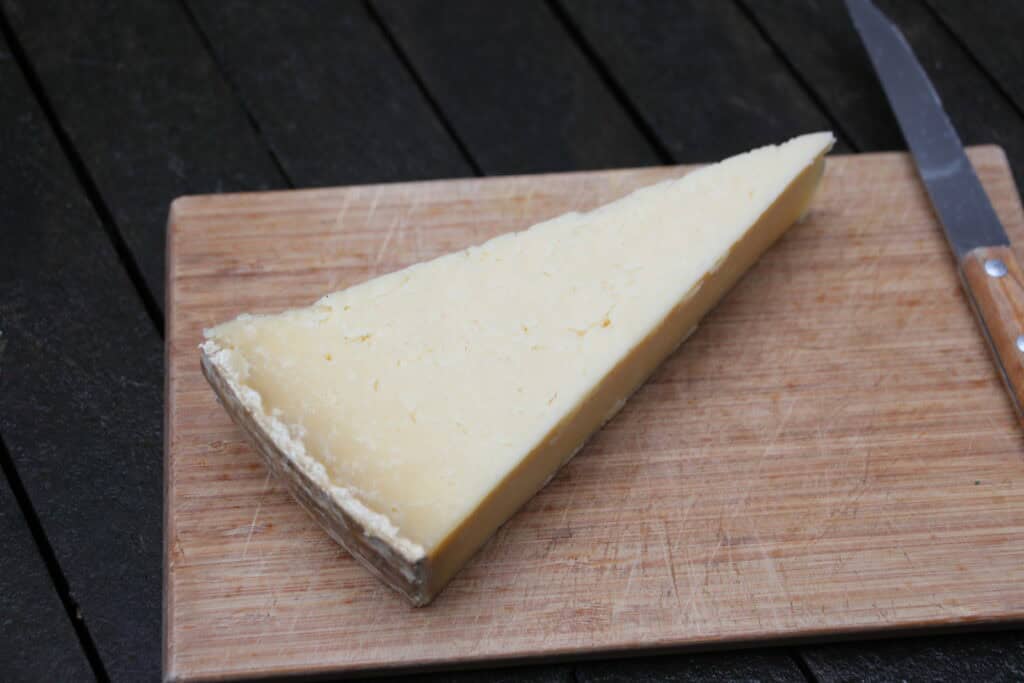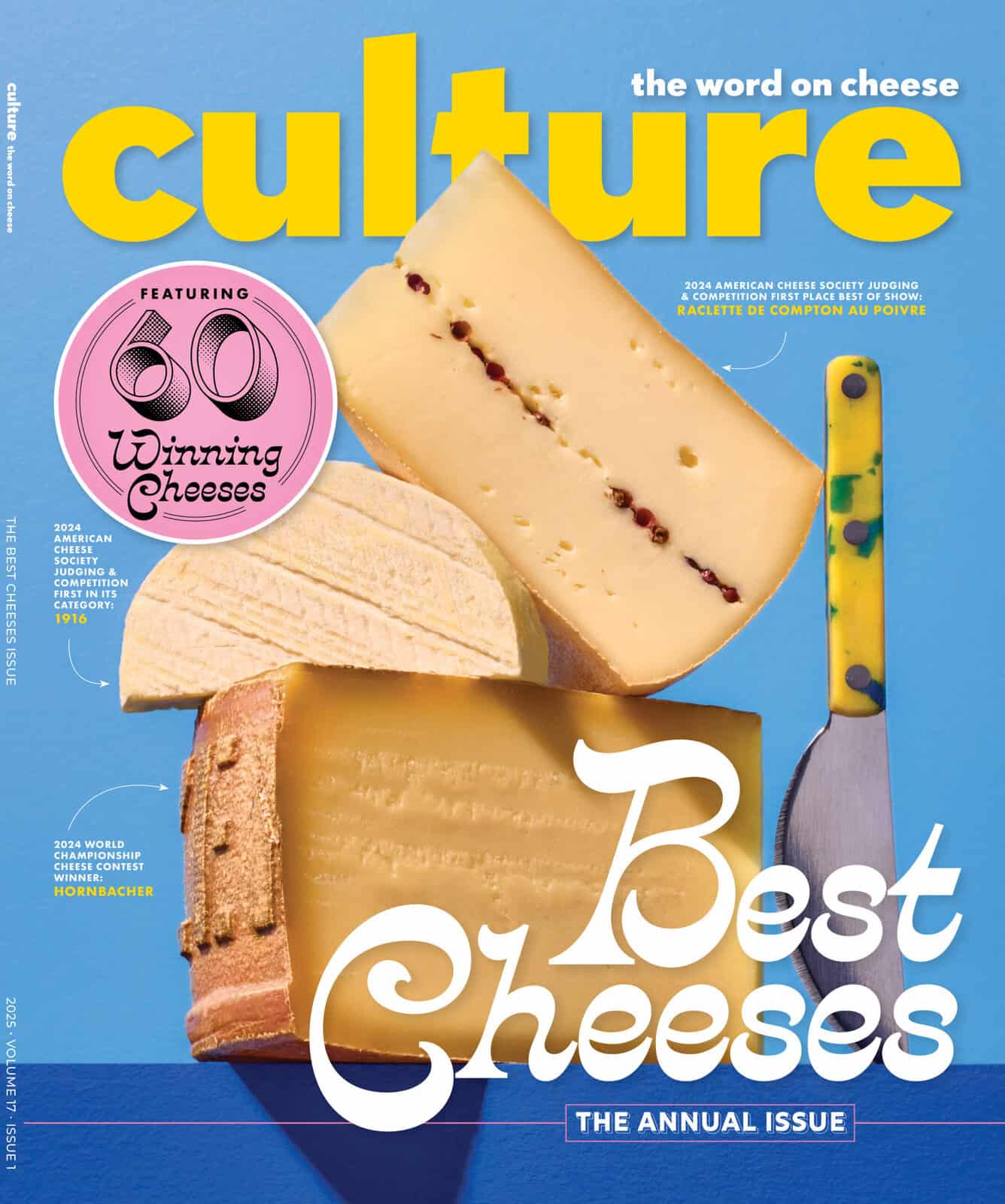Explore regional French cheeses with a turophile.
France’s central Auvergne is known for its rich volcanic soil, the ideal terroir for producing peppery Puy lentils, deeply flavored lamb, and, of course, dairy. It’s no wonder that this region is responsible for a fifth of the country’s AOP cheese, a bounty that’s on full display on the route des fromages AOP, where visitors can learn more about the region’s five AOP cheeses.
But these protected fromages are just the beginning of the dairy bounty this region can offer. From some of Europe’s best sellers to little-known specialties that barely travel outside of the region, here are the 10 Auvergnat cheeses you need to try.
Saint-Nectaire
There’s perhaps no cheese in the world quite like Saint-Nectaire—evident from the first glance of the unique rind the French creatively dub poil de chat or cat hair. Sure, it doesn’t sound all that appetizing, and yet this (edible!) grey fuzz is responsible for a complex interplay of flavors ranging from hazelnut to sweet cream, and depending on the producer, the écru pate may be semisoft and elastic or tender and pliant.
Perhaps more than any other Auvergnat cheese, Saint-Nectaire is inextricable from its volcanic terroir. Produced in the heart of the Parc Naturel Régional des Volcans d’Auvergne, the cheese is often aged in ancestral cellars formed long ago by lava flows and co-opted from the wine industry following the 19th century devastation of local grapevines. The dank, volcanic stone conveys a lovely cellar-like aroma to the finished product. It’s no wonder that despite being made in one of the smallest AOP production areas, Saint-Nectaire is the best-selling Auvergnat cheese, with nearly 14,000 tons sold in 2023.
Grand Murols
Murols is a descendant of Saint-Nectaire, though you wouldn’t think the two were related based on appearance. As opposed to the basic round shape of Saint-Nectaire, Murols looks a bit like a massive doughnut, with the center removed to ensure that the semi-soft cheese ages evenly. (Don’t worry – it isn’t wasted! Tiny murolait or trou de murol is sold wrapped in red wax and has major Babybel vibes.)
Murols has a similar reddish hue, though in the case of this cheese—also known as Grand Murols—it comes not from wax but from the generous application of annatto. The resulting cheese has a rich, milky flavor fans of mild cheeses are sure to love.
Bleu d’Auvergne
Auvergne boasts a particular wealth of blue cheeses, and depending on who you ask, may even be their cradle. Of them, Bleu d’Auvergne is one of the most popular, with a delicate woodsiness, a distinct mushroomy quality, a lovely creaminess, and just the right hit of blue. This balance is, of course, by design: Bleu d’Auvergne was perfected in the 19th century by Antoine Roussel, a pharmacist looking for a way to guarantee the veins blue cheese fans so love. He was the first to suggest inoculating cheeses with a powdered blue mold gathered from loaves of rye bread and piercing the cheeses with needles to allow oxygen to flow. The resulting pronounced veins characterize most blue cheeses today.
Fourme d’Ambert
If you like your blue cheeses a bit milder, turn your attention to distinctive Fourme d’Ambert, crafted in tall cylinders 13 centimeters in diameter. This blue cheese is typically aged 28 days, at which point its texture becomes slightly elastic. While it’s typically shot through with beautiful blue veins, Fourme d’Ambert’s flavor tends to boast just a bare hint of that distinctive bitterness. When pushed to two or three months of aging, however, Fourme d’Ambert develops a creaminess and slight sweetness that makes it particularly lovely when paired with black cherry jam.
Fourme de Montbrison
Fourme de Montbrison is not technically from the Auvergne, but given its similarity to its cousin, Fourme d’Ambert, it deserves a closer look. Both boast the same distinctive shape and size, not to mention a similarly mild flavor. But on the Loire side of the Forez mountains, producers of Fourme de Montbrison preferred slightly less veining in their blue cheese than their neighbors in the Auvergne. By salting and grinding the curds before packing them into cylindrical molds, producers of Fourme de Montbrison were able to create a cheese with a firmer, drier, yellower paste and fewer veins than Fourme d’Ambert. Flavor-wise, it’s similarly mild but slightly woodsier, with walnut aromas and a slightly bitter finish.
Cantal
Consider Cantal France’s answer to cheddar. Made with the same technique of cutting and layering curds, and thus boasting a similar crumbly texture, Cantal stands out because it’s devoid of cheddar’s familiar sharpness. Instead, Cantal boasts an almost milky quality, especially when aged just one to two months. Cantal Entre-Deux is aged at least four months for a slightly fruitier, nuttier character, while at eight months, Vieux Cantal has a far drier, more crumbly texture and powerful, spiced aromas.
Salers
Salers and Cantal are two cheeses divided by a common recipe, and while they may look alike, you’ll taste a world of difference. Unlike Cantal, Salers can only be made with raw milk from grazing cattle. This AOP regulated diet invites floral and even spiced aromas. Aged at least three months, Salers has more character and personality than Cantal, with notes of honey, fresh cream, hazelnuts, and sautéed onions.
Tradition Salers
Just eight producers make this even more traditional iteration of Salers from the milk of russet Salers cattle that graze on high mountain pastures. Traditional wooden containers used to collect milk confer essential microflora, giving the cheese an even richer, more barnyardy flavor.
Gaperon
This little mound of cheese looks a bit like the volcanic hills that dot the countryside, and it packs explosive flavor too. Generously loaded with local pink garlic and black pepper, this spreadable cheese is made with a mix of buttermilk and fresh milk. As it ages, the tart acidity of its youth transforms into a soft, buttery character that complements the seasoning wonderfully.
Artisou
Of all the cheeses on this list, this is the one you’re least likely to find outside the Auvergne. A tiny tomme aged with the help of artisons or cheese mites, this raw cow’s milk delicacy is a farmstead cheese par excellence. Often laced with delicate blue-green veins, artisou marries the nutty, mushroomy aromas of artisan tommes with a gentle, pleasant bitter note.


